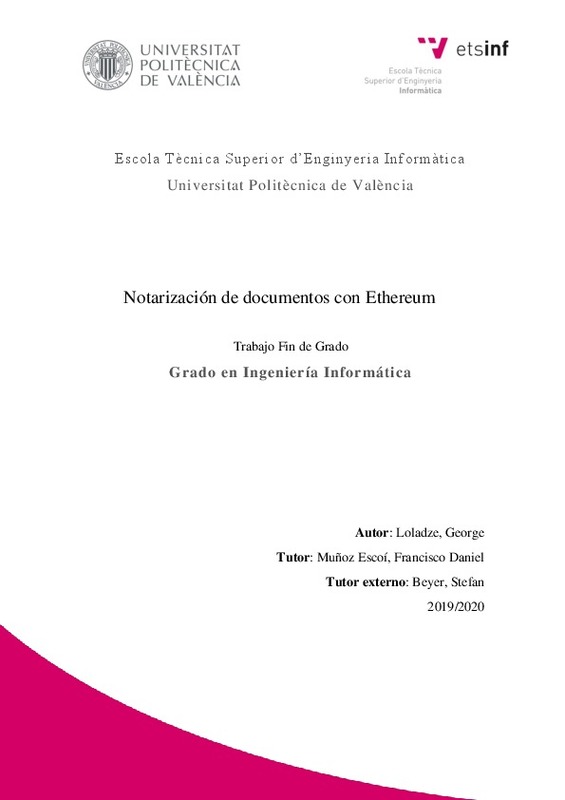|
Resumen:
|
[ES] En este TFG se va a exponer un sistema de notarización de documentos digitales aprovechando las cualidades de transparencia e inmutabilidad de Ethereum para almacenar los registros.
Se van a presentar dos posibles ...[+]
[ES] En este TFG se va a exponer un sistema de notarización de documentos digitales aprovechando las cualidades de transparencia e inmutabilidad de Ethereum para almacenar los registros.
Se van a presentar dos posibles arquitecturas para este sistema, siendo la gestión de las cuentas Ethereum la principal diferencia.
En el primer diseño, el usuario debe tener una cuenta de Ethereum con fondos para interactuar con el sistema. Los dos componentes fundamentales son: la interfaz web y el Smart Contract en Ethereum. El usuario se conecta al sistema en la página web, usando un Wallet específico de navegador (MetaMask). Desde la web podrá guardar, recuperar o validar cualquier registro en Ethereum.
En el segundo diseño, no será necesario que el cliente tenga su propia cuenta de Ethereum. En su lugar, habrá un servidor que identificará a los usuarios e interactuará con Ethereum en su nombre.
Por último, se hablará de un sistema de gestión de identidades, basado en el estándar de W3C, el cual dará una capa extra de seguridad a nuestro sistema de notarización.
[-]
[EN] In this final project a system of digital notarization is going to be presented. Transparency and immutability are a couple of qualities of Ethereum, and for that reason, it will be used as a storage to keep our ...[+]
[EN] In this final project a system of digital notarization is going to be presented. Transparency and immutability are a couple of qualities of Ethereum, and for that reason, it will be used as a storage to keep our records. Two possible architectures will be shown.
In the first model the final user must have an Ethereum account and funds to interact with Ethereum. The principal components will be a web page and the smart contract on Ethereum. Users will be given the choice to connect to our system on the web site through Metamask, a browser wallet. Metamask will be in charge of managing user s account, sign documents and do the transactions to Ethereum. From the web site, the user will be able to read, store and validate the records kept on the smart contract.
In the second design, the user doesn t need to have his own Ethereum account. Instead, a server will act as a proxy between the users and the smart contract on Ethereum. A user ID will be assigned to each individual and the server will sign, store, read or validate the documents on behalf of those individuals, keeping in consideration their user ID.
In addition, we will introduce a system of identity management, based on a W3C standard. This identity management will add an extra layer of security to our notary project.
[-]
|







